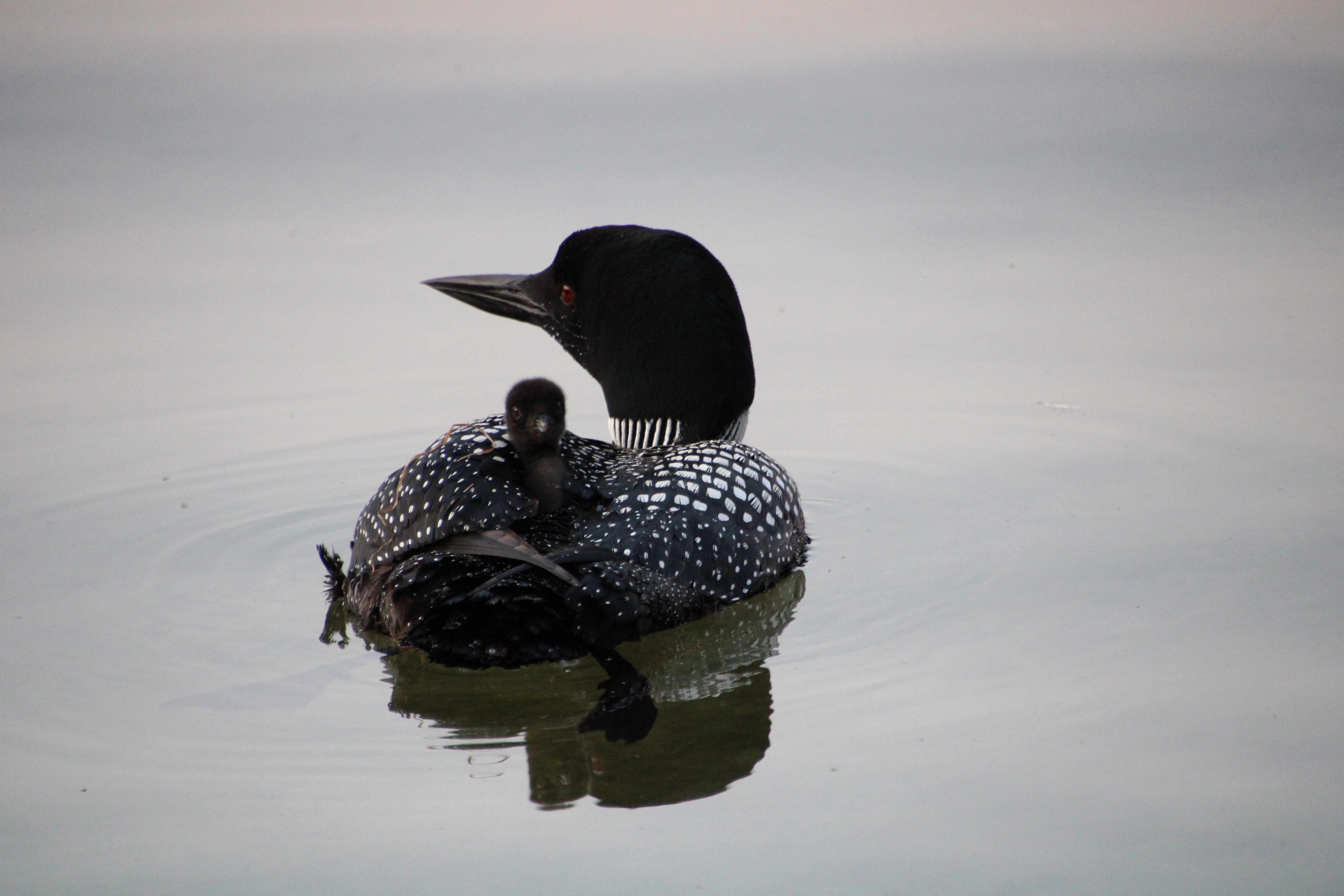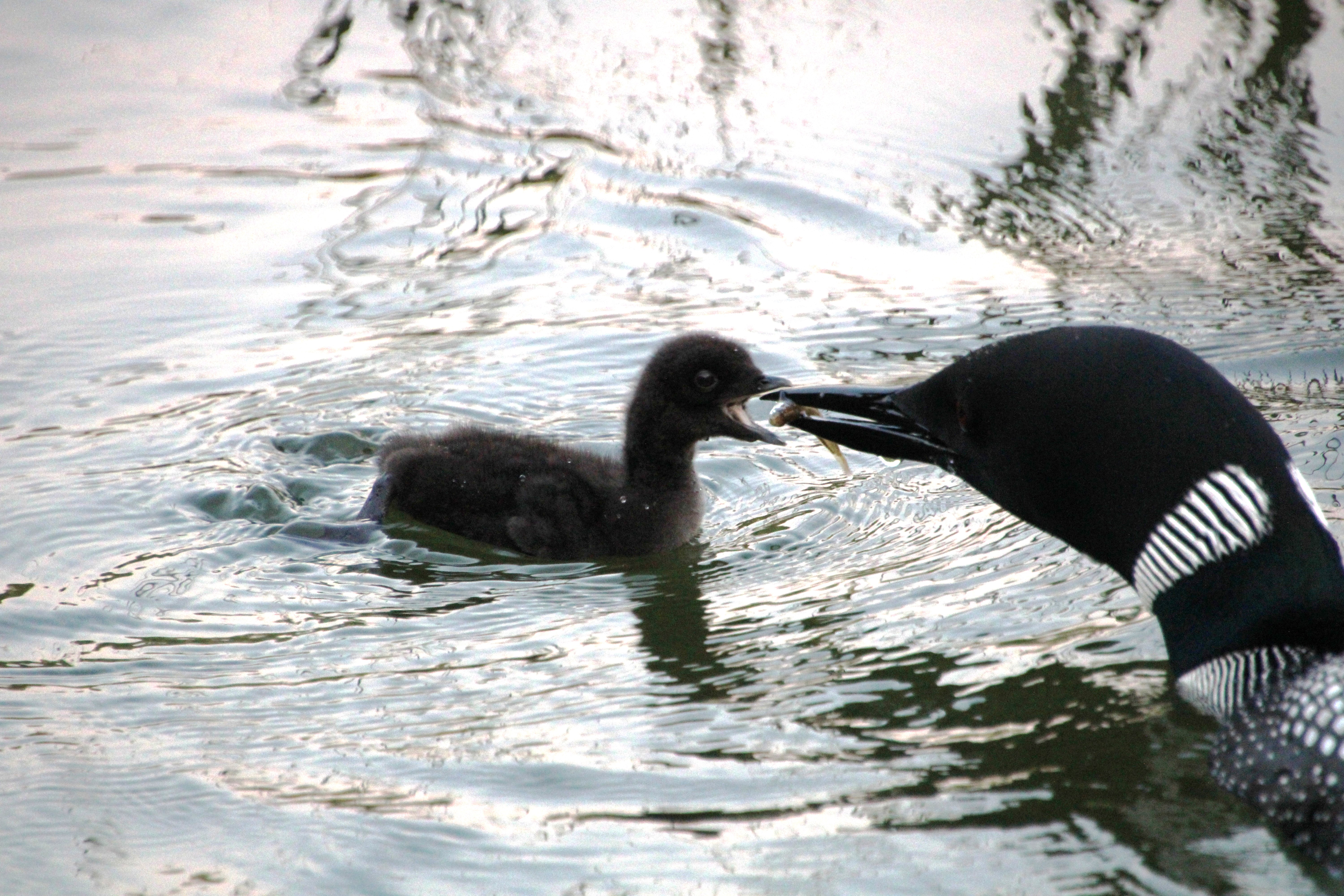June 14, 2025 at 12:58 p.m.
By By Jenny Wuebker Chapman, Aquatic Wildlife Advocacy and Loon Liaison CGWLAA | Comments: 0 | Leave a comment
As of June 11, the Woman Lake Chain has ten loon chicks from six loon pairs, and nine more nesting loons waiting patiently for their eggs to hatch. We estimate with the remaining nesting loons, if the eggs are viable and kept safe and warm, they will hatch before the 4th of July. So, we could have 19 or more loon chicks swimming around our lakes before the end of the holiday weekend.
Loons are very fascinating birds and fun to observe from a distance when boating or kayaking on your lakes. So don’t forget your camara and binoculars to get a closer look. If you see an adult loon from mid-June to September, there are likely one or two chicks nearby. When the chick hatches, they grow quickly, but even so, they are extremely vulnerable until they are strong enough to fledge and fly south (late October through November)
Please educate yourself, your family and friends on how to protect and help the loons succeed in raising their young.
Please do not disturb the loons, especially when they are feeding. Chicks cannot dive to feed themselves. The adult loons eat 2-3 pounds of fish each day plus they feed their offspring 75 times a day, up to 40% of their body weight. This means the loon parents are under the water retrieving food for their young and leaving the chicks on top of the water by themselves making it very hard for boaters to see them.
From Dr. Walter Piper’s study of loons in Wisconsin since 1993 and Minnesota since 2021, (LoonProject.com), underfed chicks are unlikely to survive to adulthood. Those that do survive are unlikely to claim a territory and raise chicks themselves. In other words, breeders producing fewer and poorer quality young will contribute to population decline. This has been shown to be true in both Wisconsin and Minnesota, but worse in Minnesota. The probability that a loon reaches adulthood depends upon its mass as a chick. Fifty-one Minnesota chicks were below average size (56 grams/day). Hence, 75% of 2023 and 2024 chicks from Crow Wing and Cass Counties stand very little chance of reaching adulthood. Even if they beat the odds and do so, they are unlikely to produce a single chick. With two years of data and one part of the state, perhaps these years were atypical, and Minnesota loons will bounce back this summer. We hope so!
When Loons are threatened, it can take them away from feeding and caring for their offspring. Do you know the calls that loons make and what they mean? The “yodel” and the “tremolo” are the two most important sound to recognize and understand. The tremolo (sometimes called the “laughing call” is an alarm call, signaling distress and urging loons to safety. The yodel is a territorial call, used by males to defend their territory. If you hear these calls, there is a good chance a predator is nearby such as an eagle. But they will also feel threatened by humans when they approach a loons’ nest or when they get to close to their chicks. Be aware when kayaking and avoid paddling towards the loons and keep your distance. Many time you will hear the alarm call, when they see or hear a jet ski or speed boat approaching. So please respect their space!
We can’t save loon eggs and chicks from natural predators, such as eagles, racoons, and turtles, but we can do our part by being Loon Aware and following important guidelines set by the Minnesota DNR to protect our loons from us!
BE LOON AWARE, follow the important guidelines set by the Minnesota DNR to protect our loons and live on for future generations to enjoy.
• WATCH AHEAD and give lots of space. Please stay at least 200 feet away. SLOW DOWN and GO AROUND.
• Do not separate the parents from the chicks. This makes it harder for parents to protect their young from predators.
• Loon parents frequently move their chicks away from the nesting environment and out into deeper water. Young chicks cannot dive, making them vulnerable to being injured or killed by watercraft. Many nests and loon territories are in heavy boat traffic areas. So, LOOK AHEAD and BE AWARE!
• Chicks tire easily! The presence of watercraft causes chicks to keep swimming instead of feeding and resting. This can weaken them, affecting their ability to survive.
• Boat and jet ski strikes are one of the leading causes of loon deaths next to lead poisoning. So please be extra careful with water sports.
• When fishing, do not cast in the direction of the loon family. If a loon enters the area, pull in your lines, and wait for it to pass. Or if the loon lingers, move to another location. Lures, fishing line, hooks, and especially, lead jigs and weights, can be a death sentence. GO LEAD FREE!
Please contact me at [email protected] if you have any questions or see anything that would be of interest regarding our wonderful loons.
Thank you very much for your support and cooperation!
Reference: LoonProject.org and BE LOON AWARE! From the MN Department of Natural Resources.
WEATHER SPONSORED BY
Latest News
Events
November
To Submit an Event Sign in first
Today's Events
No calendar events have been scheduled for today.




Comments:
You must login to comment.